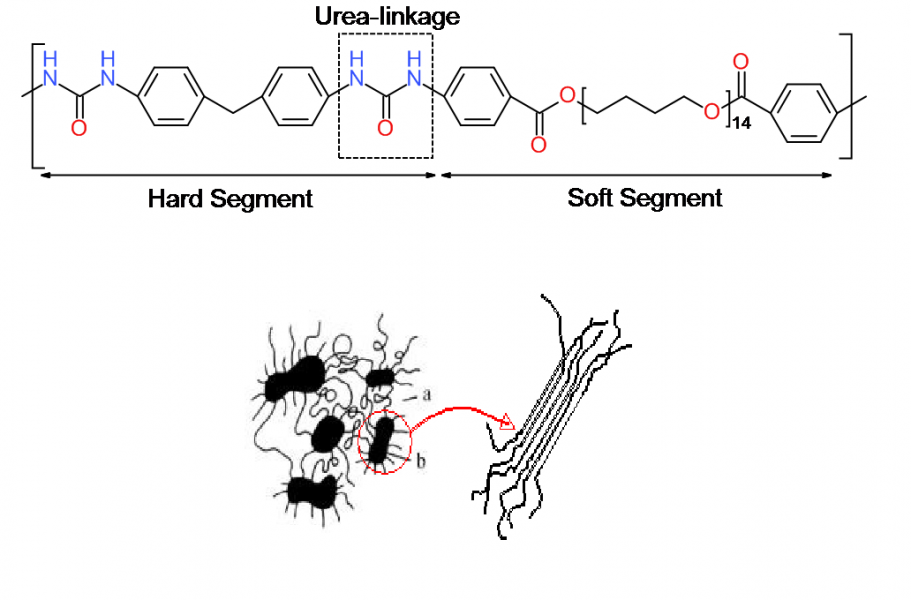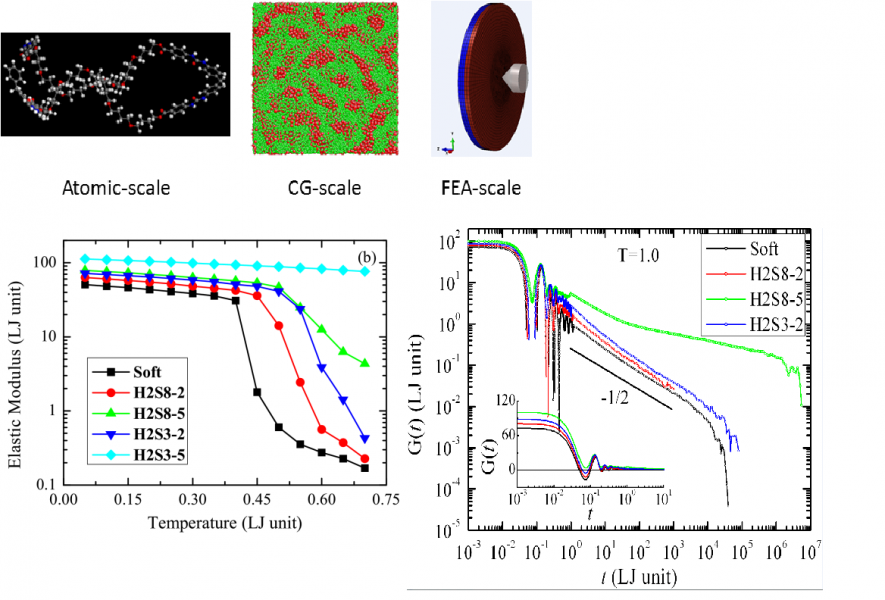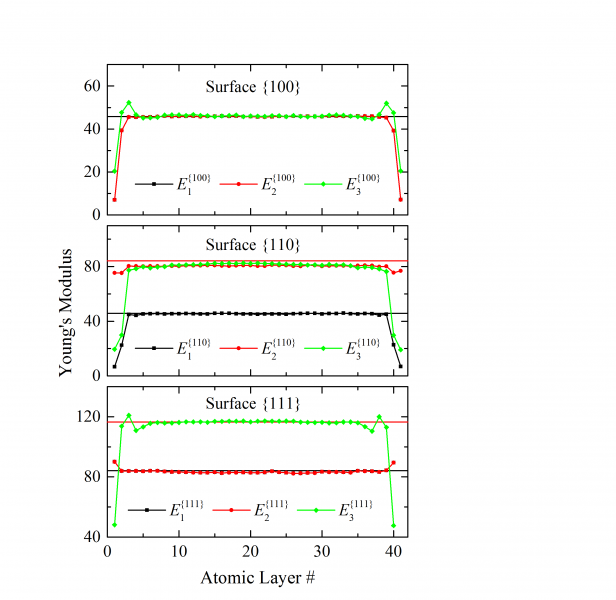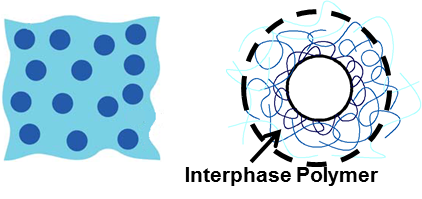Multi-Scale Simulations of Polyurea
Elastomers such as polyurea have recently been used in order to enhance the penetration and fragmentation resistance of metallic/polymer composites. Polyurea and polyurethanes can be processed into thermoplastic elastomers, in which the polyurea/polyurethane is used to make a block copolymer with a soft flexible polymer. In these thermoplastic elastomers (TPUs), the aromatic polyurea hard segments aggregate due to hydrogen bonding to form nanometer length scale domains in the copolymer which act as physical crosslinks for the soft segments (see Figure 1).

This project aims at investigating the impact of changes in cross-linking density and elastomer microstructure on the constitutive response. Toward this purpose a ternary approach, including well-established and validated atomistic, coarse grained (CG), and continuum length-scale simulations (as shown in Figure 2), will be performed and spans over six orders of magnitude of length. Figure 3 displays Young's moduli and viscoelastic properties for these hard-soft block copolymer.

Multi-Scale Simulations of Polymer-Based Nanocomposites
In recent years, nanocomposites have gained increased attention in both academic and industrial research with diverse applications. The interphase formed from intertwined chemical interactions and geometrical constraints plays a vital role in the determination of the overall physical properties. How to characterize the material properties, especially mechanical performances, within the interphase are of significant theoretical, experimental, and industrial interest. Although these local properties could be measured experimentally, the truth is that the complex morphology of these systems has prevented facile determination of them.
The objective of this project is to develop new methods to conduct MD simulations to compute (1) Tg and (2) stiffness of local material accurately with different substrates, polymers, and interactions between them. Such local property data will then be used as the inputs for continuum modeling. Figure 5 depicted the local Young's modulus for each atomic layer along Z direction for three different free surface {100}. {110}, {111}.


Relevant Publications:
Zhiwei Cui, L. Catherine Brinson, "A Combination Optimization Method for the Estimation of Material Parameters for Viscoelastic Solids", 2014, International Journal of Computing Science and Mathematics, Vol 5, pp 325.
Zhiwei Cui, L. Catherine Brinson, "Thermomechanical Properties and Deformation of Coarse-Grained Models of Hard/Soft Polymer", 2013, Physical Review E, Vol
88, pp 22602.Zhiwei Cui, Shaorui Yang, L. Catherine Brinson, "Fast Evaluation of Local Elastic Constants and its Application to nano-sized Structures", (in preparation).